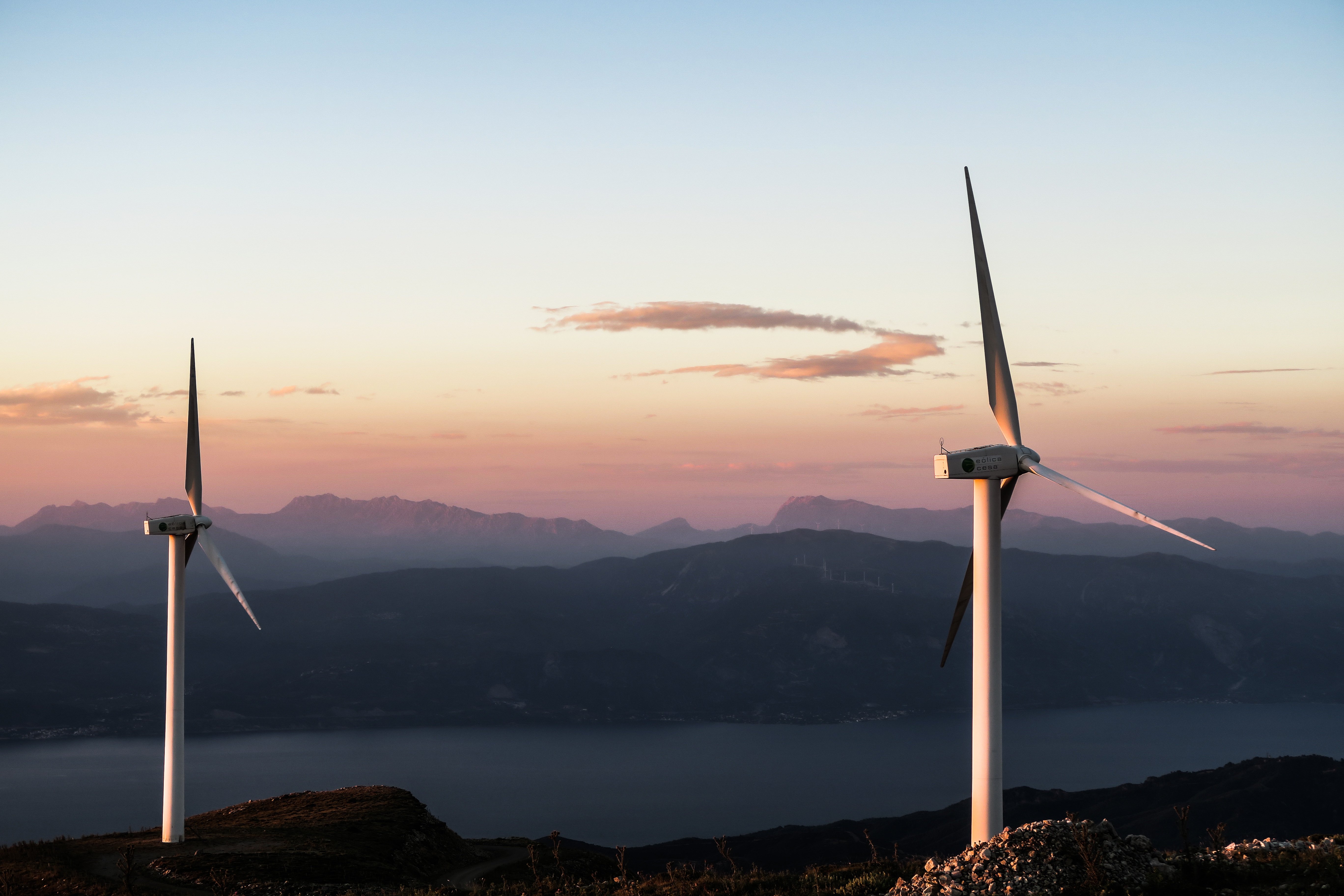Wind Generation Today and Where It May Be Heading
- December 02, 2016
- Gillian Charles

Since the first wind turbine built for generating electricity began operating in the late 1880s, advancing technology has helped to make wind generation a growing part of the nation’s energy portfolio–although it took almost a full century for the industry to gain momentum. When oil and gas prices rose sharply in the 1970s, resulting in shortages of supply, interest in alternative energy sources such as wind power grew.
In the decades since 1970, federal policies such as the Public Utility Regulatory Policies Act and the Production Tax Credit helped drive development of renewable energy facilities. In the late 1990s, states began to develop and adopt renewable portfolio standards requiring utilities to meet a percentage of their load with renewable energy. The 2000s saw a decade of significant growth for the industry, with installed wind capacity growing from 10,000 megawatts in 2006 to 60,000 megawatts in the industry’s most prolific development year to date, 2012.
Today, wind generation supplies about 5 percent of the nation’s electricity through 75,000 megawatts of wind power capacity. Twenty-nine states have adopted renewable portfolio standards, including Montana in 2005, Washington in 2006, and Oregon in 2007. While Idaho doesn’t have a standard, its Idaho Energy Plan encourages development of cost-effective alternative energy resources. Though there was a lull in wind power development following the banner year in 2012 (due in large part to the expiration and uncertainty of the future of federal tax credits), development has picked up again. In 2015, Congress issued long term renewals of both the Production Tax Credit and Investment Tax Credit, which grant developers tax incentives based on generation or upfront capital investments, ending years of uncertainty about future funding.
In the Pacific Northwest, wind power accounts for almost 10 percent of the annual electricity supplied to the grid. However, we haven’t seen much development in recent years, largely due to utilities being well poised to meet their near-term renewable portfolio obligations and relatively flat load growth. The region’s success in achieving energy efficiency has played a big role in enabling us to meet our demand.
What can we expect going forward?
The long-term renewal of federal tax incentives for wind development through 2019 provides some stability to developers. In addition, Oregon recently passed Senate Bill 1547, which updates its renewable portfolio standard to a new target of 50 percent by 2040 (and raised the intermediate years’ targets as well). Finally, several closures of baseload coal plants have been announced in the region within the next decade. All of these events will likely mean a second wave of renewable development in the region. This time around however, wind will be competing with the increasingly cost-competitive generation from solar photovoltaic technologies.
Along with smarter controls in wind turbines, allowing for better communication and integration of its power into the grid, wind turbine components have also advanced. Increases in the hub height (the distance from the bottom of the tower to the top where the nacelle and gearbox sit), rotor diameter (the length of the radius created by the spinning of the blades), and the nameplate capacity of turbines have improved the efficiency and average capacity factors of wind projects, as well as unlocked opportunities to access areas with high wind speed (the higher up you go, the greater the wind velocity). These advancements are expected to continue, with larger and more efficient machines on the horizon.
As technology improves, researchers expect the price of wind power to continue to decline long term. In a recent survey by Lawrence Berkeley National Laboratory and National Renewable Energy Laboratory, wind technology experts from around the world projected the cost of wind over the next three decades.
By 2030, experts predicted a 24 percent drop in the levelized cost of wind energy from today’s cost, and a 35 percent drop by 2050. In order to achieve these cost reductions, the study concludes that considering all aspects of the levelized cost of energy, rather than solely focusing on reducing the capital cost, is imperative. For example, investing in research and development to improve the performance and longevity of machines will increase the capacity factor and economic life of the plant, leading to an overall reduction in the levelized cost.
What about potential new development? The U.S. Department of Energy released a report in 2015 that identifies future potential wind development and areas of growth and details a roadmap to support future achievements over the next 35 years. WindVision projects significant development of wind capacity in the U.S., including the introduction of offshore wind by 2020. By 2050, the report projects total wind capacity to be over 400 gigawatts--a significant increase over the 75 gigawatts installed today. In order to achieve this, the cost of wind must continue to decline; the developable areas with high wind potential must be expanded (for example, building transmission in the high wind resource state of Montana); and the resource as an alternative to fossil fuel resources and as a hedge against price volatility.
Aside from building new wind plants, repowering existing plants is becoming popular. Repowering consists of replacing the entire wind turbine or parts of the turbine in order to increase its capacity and efficiency and extend its useful economic life.
With a recent ruling by the IRS that allows repowered wind projects to qualify for the Production Tax Credit, there may be incentive to repower existing wind plants well before the end of their useful life. While repowering efforts in the region are unknown at this time, developers like NextEra Resources have announced intentions to repower parts of their existing U.S. wind fleet in the next several years.
Modern-day wind turbines are more efficient and have greater capacities than their predecessors had. If technical advances continue and the cost of wind power declines, opportunities for new wind power development--and the ability to reach new markets such as those in offshore and repowering--are significant.


